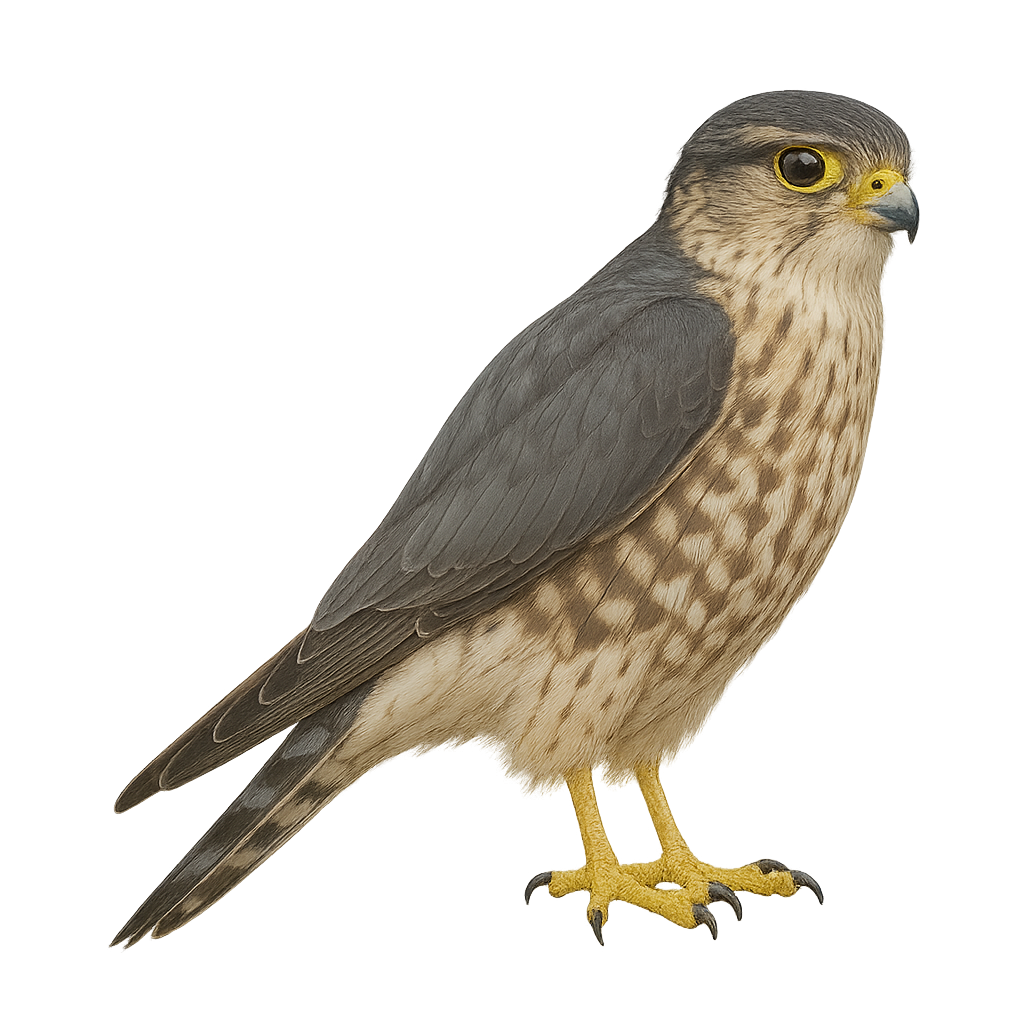Your wildlife photography guide.
Explore the merlin in detail, study its behavior, prepare your shots.
Where to observe and photograph the merlin in the wild
Learn where and when to spot the merlin in the wild, how to identify the species based on distinctive features, and what natural environments it inhabits. The WildlifePhotographer app offers tailored photography tips that reflect the merlin’s behavior, helping you capture better wildlife images. Explore the full species profile for key information including description, habitat, active periods, and approach techniques.
Merlin
Scientific name: Falco columbarius

IUCN Status: Least Concern
Family: FALCONIDAE
Group: Birds
Sensitivity to human approach: Shy
Minimum approach distance: 30 m
Courtship display: April to May
Incubation: 28-32 jours
Hatchings: June to July
Habitat:
Open forests and mountains
Activity period :
Primarily active during the day, with peak activity in the morning and late afternoon.
Identification and description:
The Merlin is a small raptor, one of the fastest birds, easily recognizable by its compact plumage and vibrant colors. It measures between 28 and 34 cm in length, with a wingspan of 60 to 80 cm, and weighs between 150 and 250 g. The male has a blue-gray plumage on its back, with black wings and a head marked with black bands, while the female is generally larger and duller, with brownish hues. The Merlin is found primarily in Europe, Asia, and North America, where it inhabits a variety of habitats, from open areas such as meadows and agricultural zones to forests. This bird primarily feeds on smaller birds, small mammals, and insects. It hunts in flight, using its impressive speed to capture its prey. It is particularly known for its fast and agile aerial maneuvers. While the species is not endangered, it faces threats such as habitat loss, human disturbance, and the reduction of prey populations.
Recommended lens:
300 mm – adjust based on distance, desired framing (portrait or habitat), and approach conditions.
Photography tips:
Use a telephoto lens to photograph from a distance, respecting the discreet and fast-flying nature of the species.
Photograph early in the morning or late in the afternoon, when soft light highlights the merlin’s contrasting plumage, especially when perched or flying low.
Look for it in various open habitats such as meadows, moorlands, coastal zones rich in shorebirds, marshes, and sparse woodlands. The merlin often hunts in rapid flight, skimming close to the ground in pursuit of small birds or prey.
Be patient and discreet. Merlins are alert and sensitive to human disturbance. Avoid disrupting their behavior, particularly near nesting sites.
The Merlin is classified as Least Concern by the IUCN. Although relatively common and adaptable, protecting its foraging and breeding habitats is essential to support healthy populations.
The WildlifePhotographer App is coming soon!
Be the first to explore the best nature spots, track rutting seasons, log your observations, and observe more wildlife.
Already 1 430 wildlife lovers subscribed worldwide

